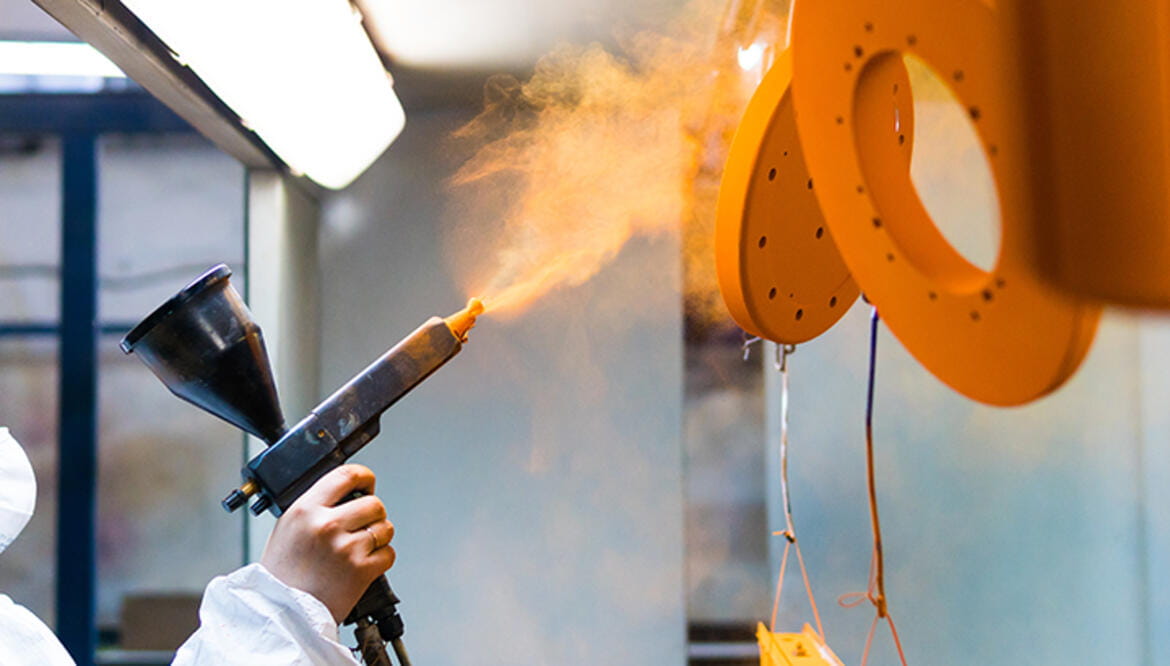
Airborne dust and fume are prevalent within a wide range of industries and work facilities. These substances are often hazardous to human health – many even being carcinogenic. Proper fume extraction equipment and control procedures can vastly improve working conditions.
Dust and fume may be generated in practically any kind of work environment. The consequences of the exposure vary, but the exposure is invariably unhealthy in and of itself. Some examples of environments where dust and fume exposure may occur are:
This depends on the type and degree of exposure. Industrial bakery employees, paint sprayers and those who inhale solder fumes in the electronics industry are examples of workers who are susceptible to occupational asthma; as are those inhaling airborne metalworking fluids while operating CNC machines. Occupational alveolitis is a known risk in the food processing industry, and those who work with mineral dusts risk contracting various kinds of pneumoconiosis (asbestosis from asbestos, silicosis from silica, for example). Welders can suffer from lung cancer and chronic obstructive pulmonary disease, both caused by substances found in welding fumes, such as nickel and chromium.
The combination of stricter regulations and substance reclassification is a development that is likely to continue
Many cases of asbestosis, silicosis and lung cancer are the result of the great lack of knowledge surrounding dust and fume in the past, as well as the poor working practices of that time. What was once considered fully acceptable is now prohibited; a development that is likely to continue, with increasingly strict regulations on dust and fume exposure in the future. Substances and processes once thought of as non-carcinogenic have since been reclassified as carcinogenic. The recent reclassification of mild steel welding fume by the United Kingdom Health and Safety Executive (HSE) is indicative of a major reevaluation process of these substances and the hazards they pose, even in small quantities.
As knowledge of substances and their impact on health will only increase over time, one can expect a gradual tightening of the limits of exposure. Take the example of manganese, a substance found in welding fume. Manganese has been found to cause harm to the nervous system, and repeated high exposures may even cause a condition known as ‘manganism’, with symptoms similar to Parkinson’s disease. The current workplace exposure limit for manganese is 0.5 milligrams per m3 (on an eight hour time weighted average). However, the European Union has proposed that the exposure limit should be reduced to 0.2 milligrams per m3. There will also be an additional, specific standard for respirable particles: 0.05 milligrams per m3.
Evaluating the hierarchy of control is a good first step in establishing how a company can work with lowering dust and fume exposure. Below is a list of factors to consider:
In order to limit operators’ exposure to harmful airborne dust and fume, many Nederman extraction solutions are designed to capture as much of these contaminants as possible right at the source. As for the filtration solutions, they are constructed so as to maximize the retention of the contaminants, and to minimize emissions. Local Exhaust Ventilation is a common and easily applicable solution, whether it comes in the form of high vacuum on-tool or on-torch extraction, an extraction arm, a downdraught bench, a booth or enclosure. There are also secondary room cleaning solutions, which can be used in order to eliminate so-called fugitive emissions. Variables within the workplace, such as cross drafts from doors being opened and closed, mean that no matter the efficiency of the capture-at-source-solution, some fugitive emissions may still escape capture at the source.
If you have any questions about dust and fume extraction in the workplace, contact us. You will also find other articles on dust and fume extraction, industrial housekeeping, combustible dust and much more here at the Nederman Knowledge Center.
We have extensive experience of various challenges in the different industries and our experts are very skilled, helpful and professional. With us, you can feel secure that we take care of you and your needs. You are always welcome to contact us regardless if you have a short question or a more complex and complicated one. A warm welcome to Nederman.
Contact us here